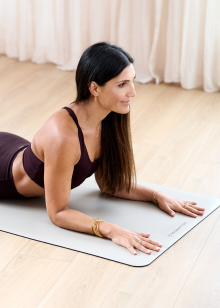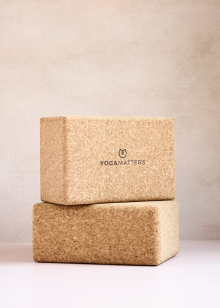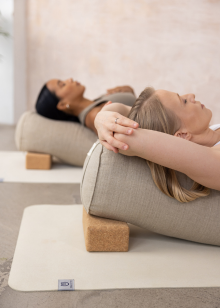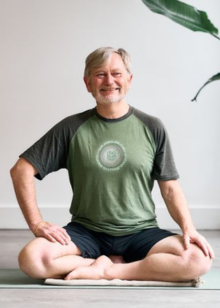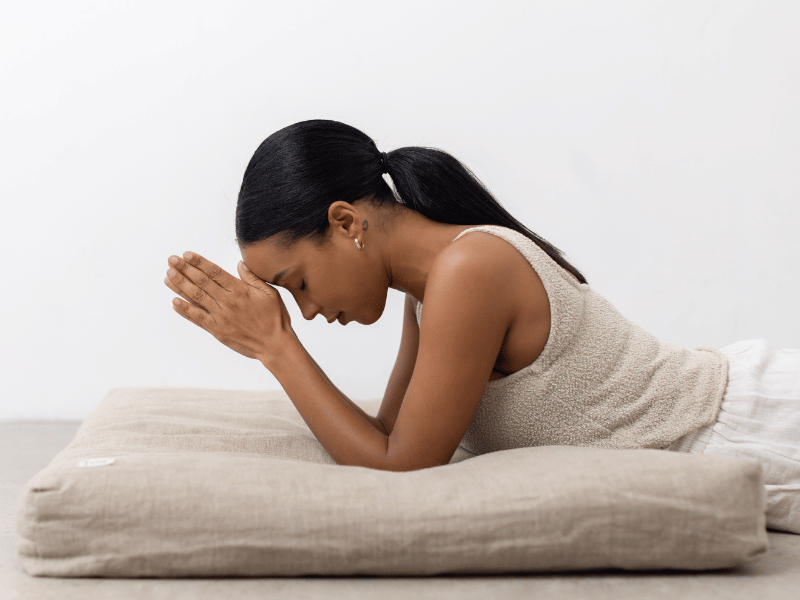A central aspect of yogic philosophy, Buddhism and Vedanta, is the practice of being content and peaceful when the outside world is unpredictable and at times chaotic. Parinamavada is the Buddhist concept that everything is in a constant state of flux and change, and that attachment to that which changes brings suffering. Indeed, suffering for many of us arises because we become attached to the things in life we can’t control, whether its physical appearance, work life, relationships, finances or flexibility. We may feel joyful when everything is exactly as we want it to be, but as soon as things change, we’re often filled with underlying anxiety and a sense of loss. Freedom from attachment leads to a sense of peace unrivalled by any material object or achievement. As Thich Naht Hanh has said; “Letting go gives us freedom and freedom is the only condition for happiness.” Fortunately there are a number of calming practices that can help us feel more balanced and entered even at a time of uncertainty and unease.
Atma Vidya
Whilst freedom from attachment is one step on the path to peace, Atma Vidya or ‘knowledge of the reality of the self’ takes the practice further and encourages the practitioner to explore all the things they are not, in order to know the nature of what they really are. Atma Vidya reasons that whatever is happening around us and to us is just like a play unfolding, an illusion we mistake for reality. Freedom from this illusion and the realisation that our true self is something far beyond what we cling to on a daily basis gives a sense of contentment, groundedness and a deep knowing that we are in fact pure consciousness itself.
So how can we move closer towards experiencing a glimpse of this grounded peace and contentment? How can we find stillness amongst the ever-changing world around us? Yogic practices have fortunately focused on this for thousands of years, so we have a treasure trove of practices to choose from and cultivate daily. Try the following to help you feel calm, grounded and peaceful at a time when things are unpredictable:
Pranayama:
Prana refers to ‘life force’ – the energy behind life itself, but it also implies ‘breath’. By observing the breath, we observe our life force energy, and by cultivating a harmonious breathing pattern, we allow our life force to be more harmonious too. Sama Vritti Pranayama is a breathing technique known as ‘equal breathing’ or breathing with ‘equal fluctuations’ in length. This simple practice helps calm the mind and bring about a sense of balance. Simply bring your body into a comfortable position, breathe in for a count of five, hold for five, breathe out for a count of five and hold for five. This practice is also known as ‘box breathing’, and you can imagine drawing the lines of a square with each breath to give the mind a focus. Practice this when you wake in the morning and before bed if possible.
Mantra:
The words we hear and say have a powerful impact upon how we feel. Mantras are words imbued with an almost magic quality can really make a difference to our state of being. To stay calm and grounded, choose a mantra like Om Shanti meaning ‘I am peace’ or an affirmation such as ‘I am calm, I am centred, I am well’. Repeat often, especially in times of anxiety.
Mudra:
You have powerful tools for wellbeing literally in the palms of your hands, and these are known as mudras. Mudras are symbolic gestures often made with the hands to help bring about different states of being. Adopting a mudra can help deepen your meditation practice, or serve as a way to focus the mind. To feel grounded, choose Prithvi Mudra, the earth mudra which involves bringing the tip of the ring finger and thumb together to active more earth energy within the body and mind.
Connect To Nature:
Nature has a way of helping the body decrease levels of cortisol (the ‘stress hormone’) and increase endorphins (happy hormones!) Whether it’s getting outside in the woods, near a lake, or simply stepping out into your garden, try to make connecting with nature a daily practice and notice how much calmer you feel.
Feel Your Feet:
When the mind is busy, focusing on the feet is a great way to move energy down from the brain to the body. Stand comfortably and focus on the feeling of your feet connected to the earth. Lift your toes and replace them one by one, noticing the firm connection of the skin on the soles of your feet to the ground. As you exhale, imagine roots growing from the feet deep into the earth, and as you inhale, imagine drawing up energy from the earth into your body.
Acupressure Points:
For a quick dose of calmness, try firmly but gently massaging the following acupressure points with your index finger or thumb: Hall Of Impression point, located between the eyebrows, and the Union Valley point, located in the webbing between the thumb and index finger.
Essential Oils:
Scents interact directly with the brain and can change how we feel almost instantly. Try inhaling good quality essential oils like lavender or chamomile for calming, and neroli or ylang ylang for a mood boost.
Brahmari Breath:
Humming is naturally soothing for the nervous system, and yogis have been practicing Brahmari Pranayama or ‘Humming Bee Breath’ for thousands of years. Simply close your eyes and cover your ears. Inhale fully and as you exhale, find a deep humming sound. Notice the vibrations in your sinuses, chest and throat as you hum, and repeat as often as you like.




